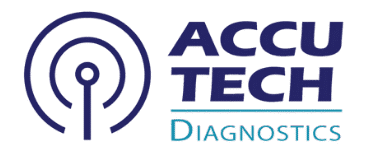Cell Enumeration
"Cell enumeration," also known as cell counting, is the process of quantifying the number of cells in a given sample. It is a fundamental and critical measurement across various fields in life sciences, biotechnology, and particularly in clinical diagnostics.The goal of cell enumeration is to determine the concentration of cells (e.g., cells per milliliter) and often to assess their viability (live vs. dead cells) or identify specific cell types within a heterogeneous population.
Why is Cell Enumeration Important ?
The goal of cell enumeration is to determine the concentration of cells (e.g., cells per milliliter) and often to assess their viability (live vs. dead cells) or identify specific cell types within a heterogeneous population.
Medical Diagnosis
- Hematology: Essential for a Complete Blood Count (CBC), which measures red blood cells (RBCs), white blood cells (WBCs), and platelets. Abnormal counts can indicate conditions like anemia, infection, inflammation, or blood cancers (leukemia, lymphoma).
- Infectious Diseases: Counting specific immune cells (e.g., CD4 T-cells in HIV monitoring) or quantifying microbial cells (e.g., bacterial load in urine, viral load in blood).
- Body Fluid Analysis: Counting cells in cerebrospinal fluid (CSF), pleural fluid, peritoneal fluid, or synovial fluid to diagnose infections, inflammation, or malignancy.
Treatment Monitoring
- Chemotherapy: Monitoring blood cell counts (e.g., neutrophils, platelets) to assess bone marrow suppression and guide dose adjustments.
- Immunosuppression: Tracking immune cell populations (e.g., lymphocytes) in transplant patients.
- Cell Therapies: Determining the precise dose of cells (e.g., CAR T-cells, stem cells) to be administered to a patient.
Research and Bioprocessing
- Cell Culture: Monitoring cell growth, viability, and density in bioreactors for drug development, vaccine production, or cell-based therapies.
- Drug Discovery: Assessing the effect of new compounds on cell proliferation or viability.
- Microbiology: Quantifying bacteria or yeast in food, water, or environmental samples.
Key Methods for Cell Enumeration
Cell enumeration methods range from manual techniques to highly sophisticated automated systems.
Manual Cell Counting
- Hemocytometer:
- Method: A specialized thick glass microscope slide with a precisely etched grid. A small, known volume of cell suspension (often mixed with a viability dye like Trypan Blue, which stains dead cells blue) is loaded into the chamber. Cells within specific squares of the grid are counted manually under a microscope.
- Advantages: Inexpensive, widely available, allows for visual inspection of cell morphology.
- Disadvantages: Labor-intensive, time-consuming, prone to human error and bias, lower throughput.
- Automated Cell Counting:
Automated methods offer higher throughput, better precision, and reduced variability compared to manual counting.
- Electrical Impedance (Coulter Principle):
- Method: Cells suspended in an electrolyte solution are drawn through a small aperture. As each cell passes through, it displaces an equal volume of electrolyte, causing a momentary increase in electrical resistance (impedance). This change is detected and counted as a cell. The magnitude of the change can also provide information about cell size.
- Advantages: Rapid, high precision for homogeneous cell populations, widely used in hematology analyzers.
- Disadvantages: Cannot distinguish between live/dead cells without additional reagents, sensitive to debris, may struggle with highly irregularly shaped cells or cell clumps.
- Image Cytometry (Automated Image-Based Counters):
- Method: These instruments capture digital images of cells in a counting chamber (similar to a hemocytometer slide). Software then uses image recognition algorithms to identify and count cells. Viability dyes (e.g., Trypan Blue, fluorescent dyes) can be used to differentiate live from dead cells.
- Advantages: Provides visual verification, measures cell size and morphology, can assess viability, relatively high throughput.
- Disadvantages: Can be affected by cell clumps, debris, and lighting conditions.
- Flow Cytometry:
- Method: Cells in a fluid stream pass one by one through a laser beam. Light scatter (forward scatter for size, side scatter for granularity/complexity) and fluorescence (from stained cells) are detected. This allows for counting, sizing, and identifying specific cell populations based on their unique light scatter properties or fluorescent markers (e.g., antibodies bound to cell surface proteins).
- Advantages: Highly sophisticated, can analyze multiple parameters simultaneously, identifies specific cell types (e.g., CD4 T cells, B cells, NK cells), assesses cell viability, and can even sort cells.
- Disadvantages: More expensive and complex to operate, requires specialized training.
- Applications: Crucial in immunology, oncology (e.g., leukemia/lymphoma diagnosis and minimal residual disease detection), and stem cell enumeration (e.g., CD34+ cells in hematopoietic stem cell transplantation).
Indirect Methods (for Microorganisms)
- Plate Counting (Colony Forming Units – CFU):
- Method: Serial dilutions of a microbial sample are plated on an agar medium. After incubation, each viable microorganism grows into a visible colony. The colonies are counted, and the original concentration is calculated.
- Advantages: Measures only viable (living) cells, highly sensitive for low concentrations.
- Disadvantages: Time-consuming (requires incubation), cannot count non-viable cells, prone to error if cells clump.
- Turbidometric Methods (Spectrophotometry):
- Method: Measures the turbidity (cloudiness) of a cell suspension using a spectrophotometer. As cell density increases, less light passes through the sample.
- Advantages: Rapid, non-destructive.
- Disadvantages: Measures total cell mass (including dead cells and debris), less precise for exact counts, requires a standard curve.
Cell enumeration is a foundational skill and capability in any diagnostic laboratory, providing essential quantitative data that underpins diagnosis, treatment, and research in countless medical and biological applications.

